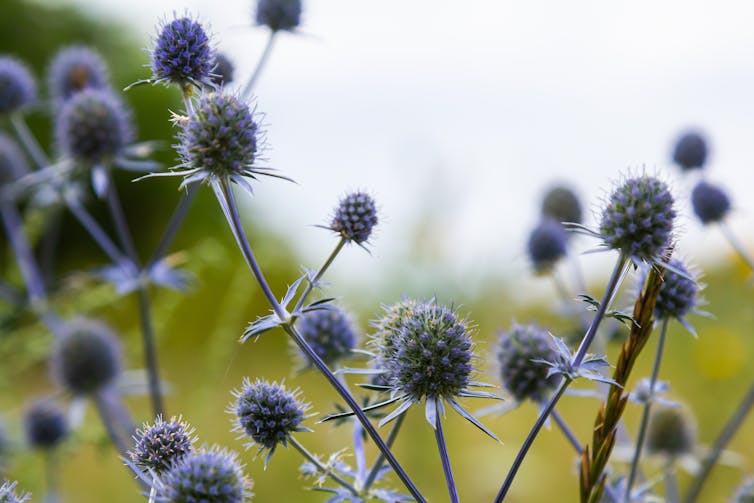Climate change warmer, wetter winters and hotter, drier summers. Britain has seen warm periods before, such as in 130,000 years ago, but the current speed of change . This will have many effects, but it will also change one of the core parts of British life: our gardens.
Rather than fighting the inevitable and trying to keep growing the same plants we have always grown, how might we adapt what we grow and how we grow it?
The first to go, tragically for some, may be the classic British lawn. Already this year across the country, large areas of grass are looking parched and brown in the face of . The has just a few species of grass and is unlikely to be very drought-resistant. You can maintain a grass lawn that is more tolerant of dry weather by using drought-resistant fescue species of grass, and keeping the lawn well aerated (that means putting small holes in it to allow air, water and nutrients to reach the grass roots). But it may still suffer periods in which it looks unhealthy.
Swapping a lawn for a meadow can and decrease maintenance such as regular mowing and watering, because meadows only need to be cut once a year and don’t need as much water. Perhaps instead of lawns we can embrace all year round, creating a greater diversity of plant and animal life in gardens.
Wildflowers such as and can be and the birds that feed on them. These plants are drought-tolerant too.
As well as challenges in the face of a changing climate, there will be opportunities. Grape vines were grown in Britain in , and British wine production is once again a . Regular British gardeners could also grow a wider , and even make their own wine. Warmer, drier summers could make plants such as citrus and olive trees easier to grow, with fruits more likely to ripen and less likely to be lost to frost in winter. Sunflowers, while they already grow here, in the new conditions.
There will be a shift in the best types of decorative plants for gardens, with those needing lots of water, such as hydrangeas, delphiniums and gentians, becoming difficult to grow. We could look to the , and choose shrubs such as thyme and lavender, or climbers like passion flowers, that need less water. It is also possible to grow a drought-tolerant garden with plants that are native to Britain, such as species of Geranium and Sedum. Coastal plants such as sea kale and sea holly that grow in harsh, rocky conditions can also make great .

Finally, the way we garden will need to change. Setting up water storage systems, from simple water butts to larger, that could include (used but clean water from baths and washing up) or underground water storage, will help gardeners to make the most of storms by storing the rainwater for use during droughts. You can set up a dispersion system to recycle lightly used household water, such as from a dishwasher or shower.
Soil health is important too, as soils with are better at holding water. Composting food waste to add to soil would be a great way of helping to increase the organic content and . This has the added value of avoiding peat composts. Peat comes from wetlands and it will eventually run out. Peat harvesting also releases carbon dioxide into the atmosphere, .
The next few decades will be challenging for gardeners. Britain will probably experience an increase in prolonged droughts and other , as well as overall warming caused by climate change. Our gardens may cover a small proportion of land in the UK. But we can use them to experiment and develop sustainable ways of existing, growing not just new plants but also hope in the face of adversity.
, Senior Lecturer in Ecology,
This article is republished from under a Creative Commons license. Read the .




